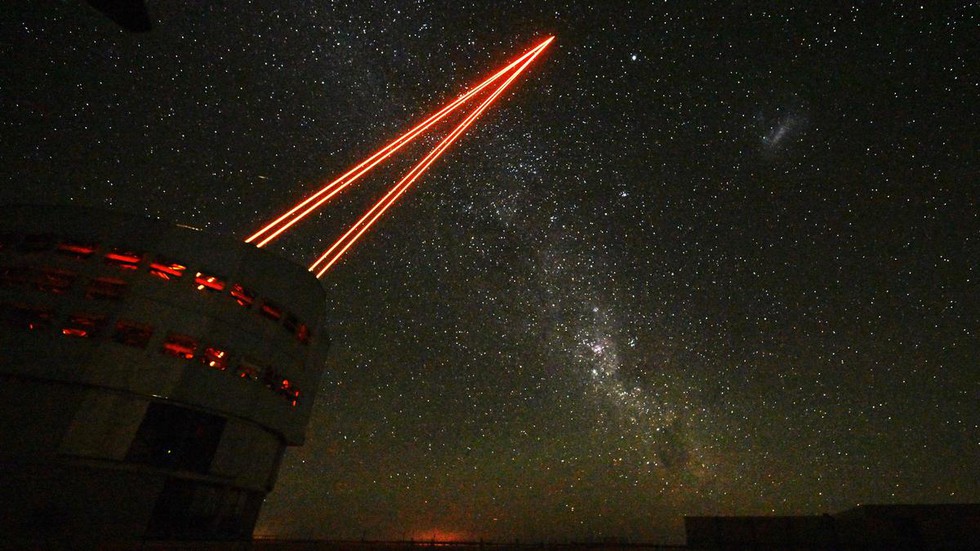About Carbon Dioxide (CO₂) Lasers
- The first CO₂ laser was developed by Indian-American scientist C.K.N. Patel.
- It is a four-level molecular gas laser that operates using vibrational energy states of CO₂ molecules.
- Highly efficient, producing high-power continuous or pulsed output.
- Structure: A CO₂ molecule consists of one carbon atom at the center and two oxygen atoms on either side. It vibrates in three independent modes:
- Symmetric Stretching Mode: Oxygen atoms move simultaneously towards or away from the fixed carbon atom.
- Bending Mode: Carbon and oxygen atoms vibrate perpendicular to the molecular axis.
- Asymmetric Stretching Mode: Oxygen atoms move in one direction, while the carbon atom moves in the opposite direction.
- Principle of CO₂ Laser: The laser transition occurs between vibrational energy states of CO₂ molecules. Energy is transferred from excited nitrogen (N₂) molecules to CO₂, achieving the population inversion necessary for laser action.
Characteristics of CO₂ Laser
- Type: Molecular gas, four-level laser.
- Active medium: Gas mixture of CO₂, N₂, and He.
- Pumping Method: Electrical discharge.
- Optical Resonator: Concave mirrors.
- Power Output: Up to 10 kW.
- Nature of Output: Continuous wave (CW) or pulsed wave.
- Wavelength: 9.6 μm & 10.6 μm (Infrared region).
How does the Detection Work?
- Radioactive decay and ionisation: When a material undergoes radioactive decay, it emits charged particles (alpha, beta, or gamma rays) that ionize the surrounding air, creating plasma.
- Avalanche effect: The free electrons in plasma gain energy and collide with other atoms, releasing more electrons. This self-sustaining process is called avalanche breakdown and leads to a chain reaction of ionization.
- Laser characteristics: Researchers used a carbon-dioxide (CO₂) laser emitting long-wave infrared (LWIR) radiation at 9.2 micrometres. The longer wavelength reduces unwanted ionization and improves sensitivity.
- Detection mechanism: The laser accelerates seed electrons in the plasma, creating microplasma balls. These microplasmas generate a measurable optical backscatter that can be detected and analyzed.
- Fluorescence imaging: Used to analyze the plasma formation dynamics and understand the distribution of seed electrons.
- Mathematical model: Developed to predict backscatter signals based on plasma seed densities.
- Validation: The model accurately reproduced experimental results, confirming the reliability of the detection technique.
Advancements in Detection Range
|
Parameter
|
Previous Techniques
|
CO₂ Laser Technique
|
|
Alpha particle detection
|
1 meter
|
10 meters (10x improvement)
|
|
Gamma ray detection (Cs-137)
|
Limited capability
|
Up to 100 meters
|
|
Potential future range
|
~10 meters max
|
Possibly 1 km+ with improvements
|
- Alpha particles: Successfully detected from 10 meters away (10x improvement over previous methods).
- Gamma rays (Cs-137): Could potentially be detected from 100 meters away by scaling up laser optics.
